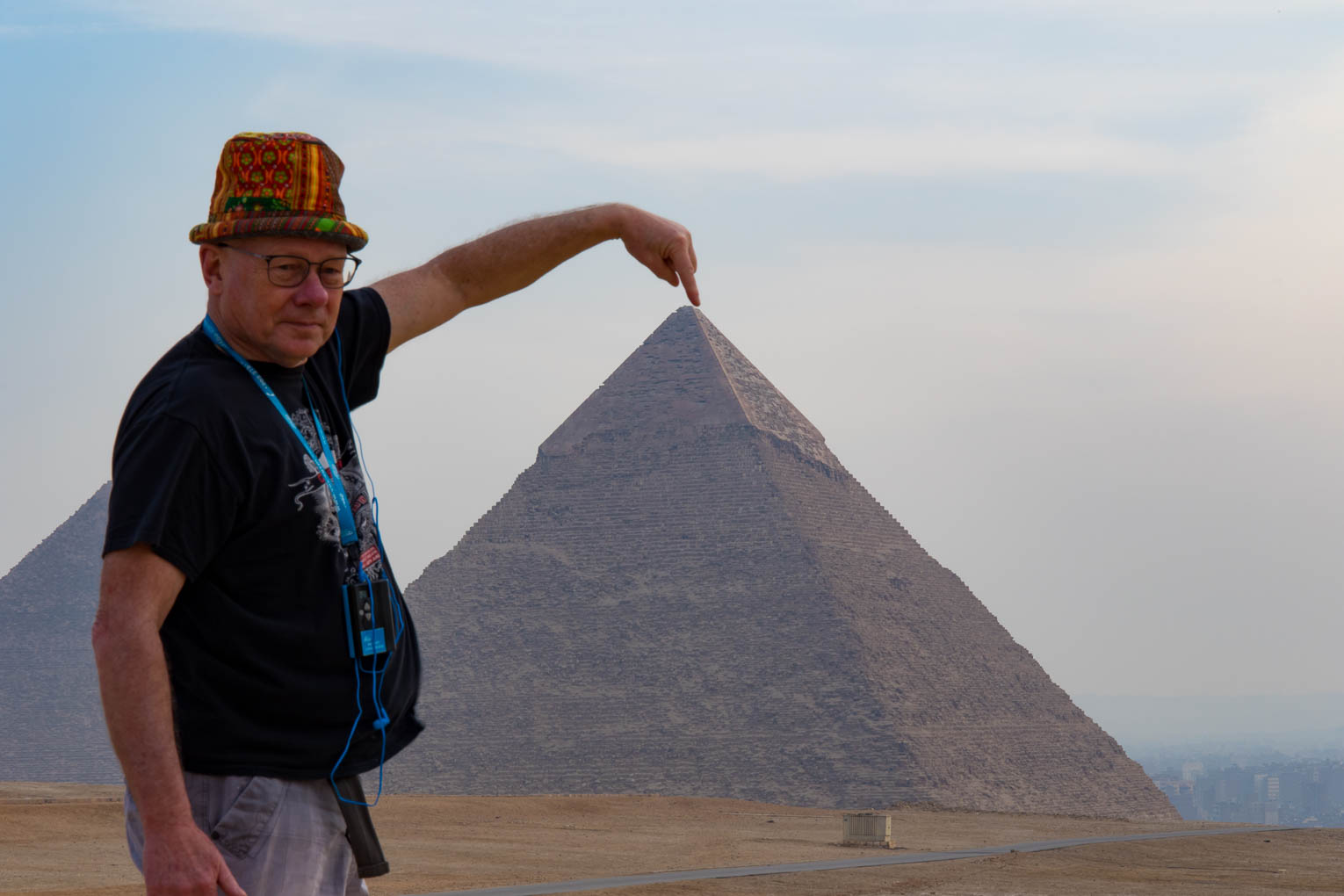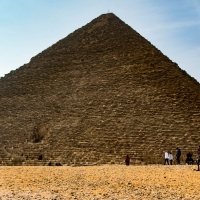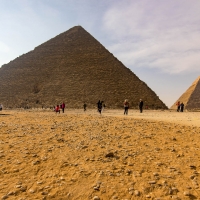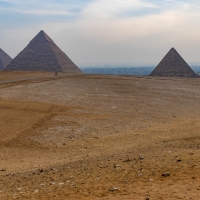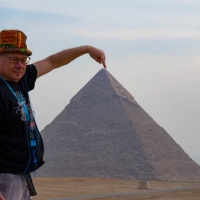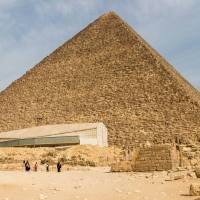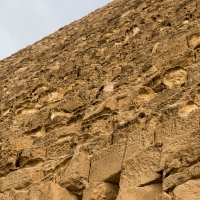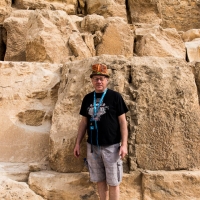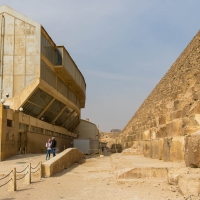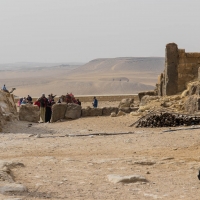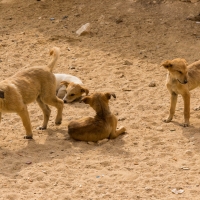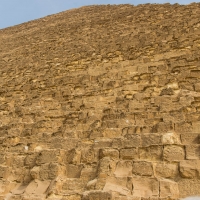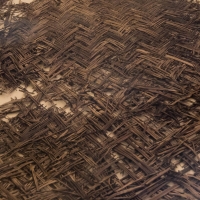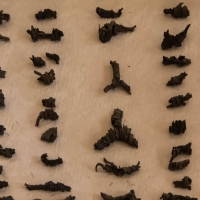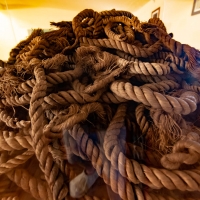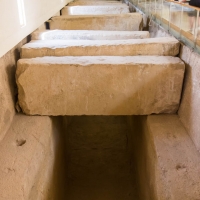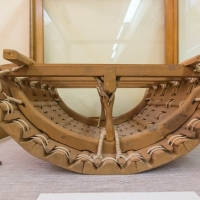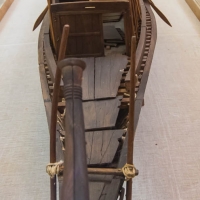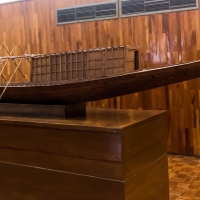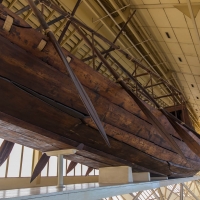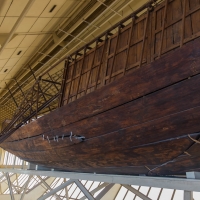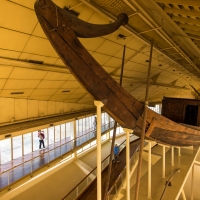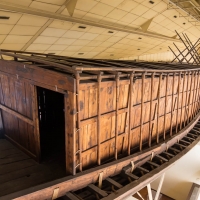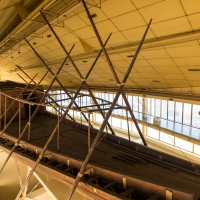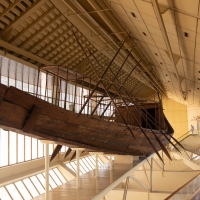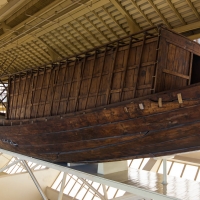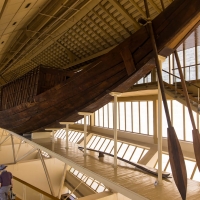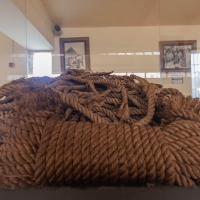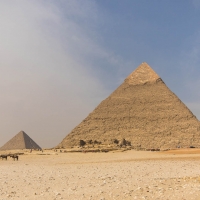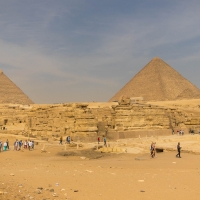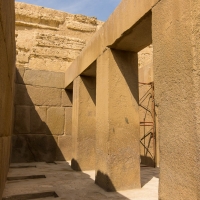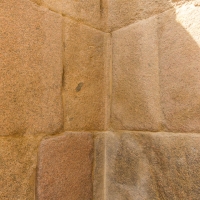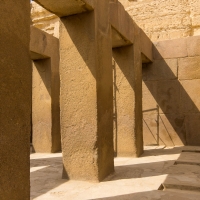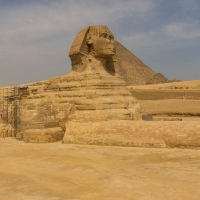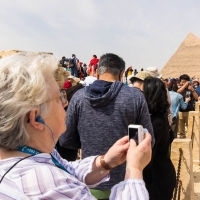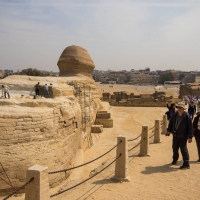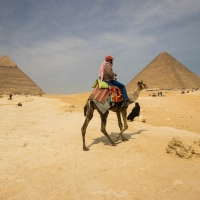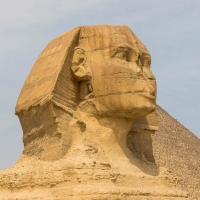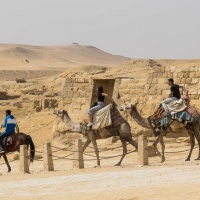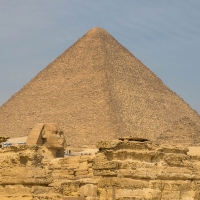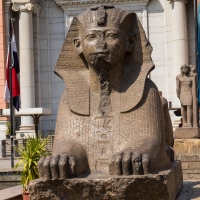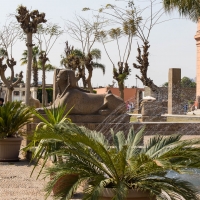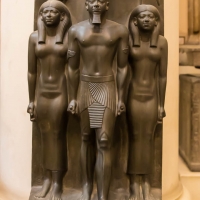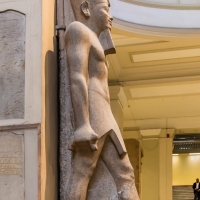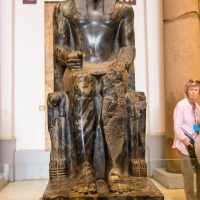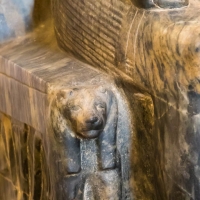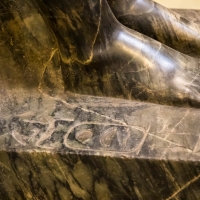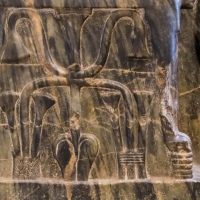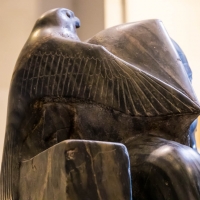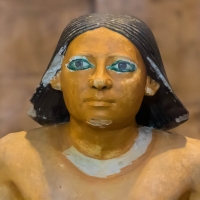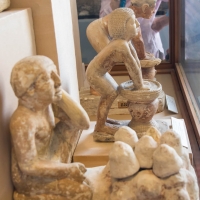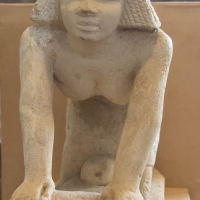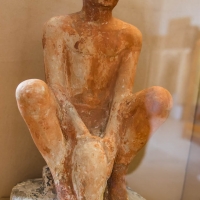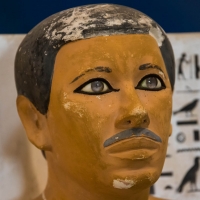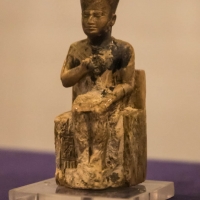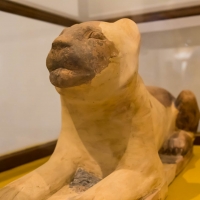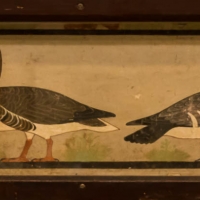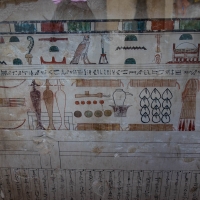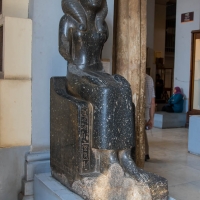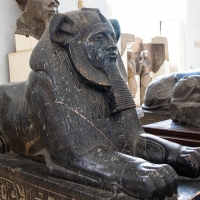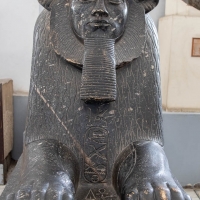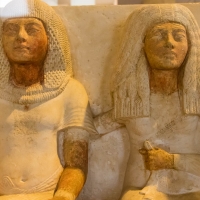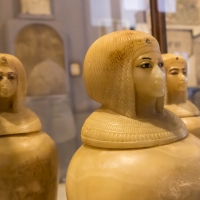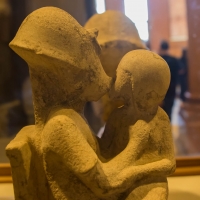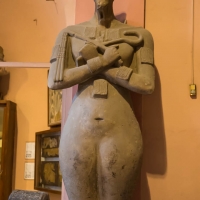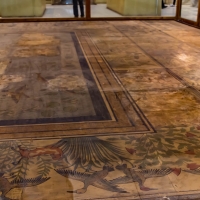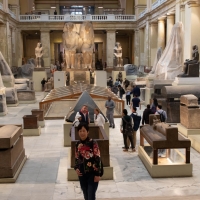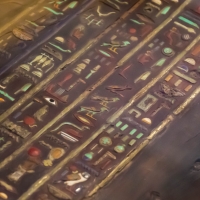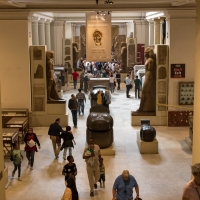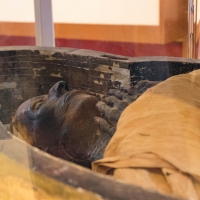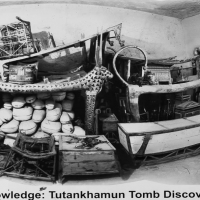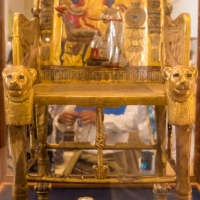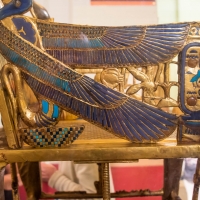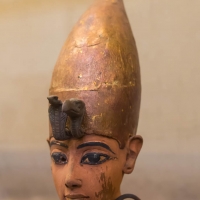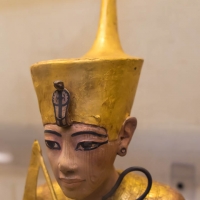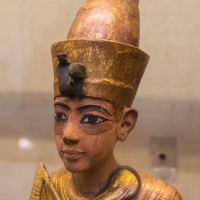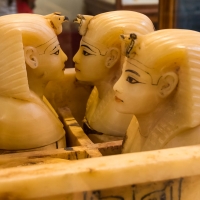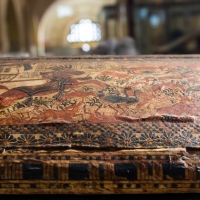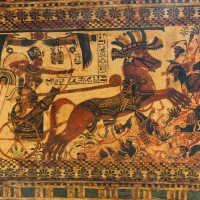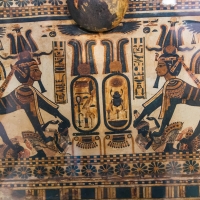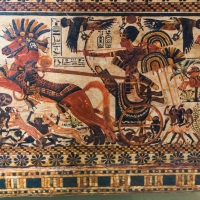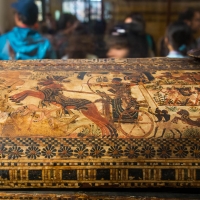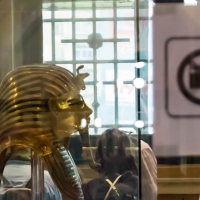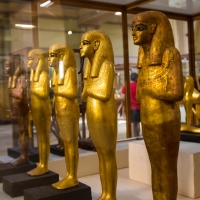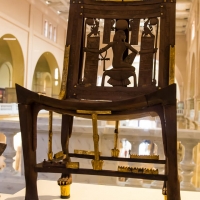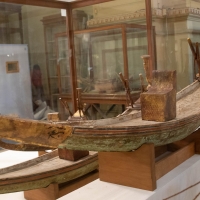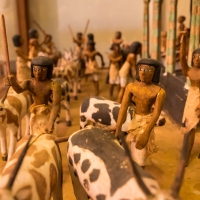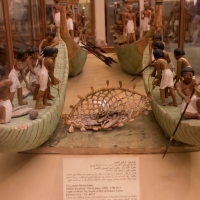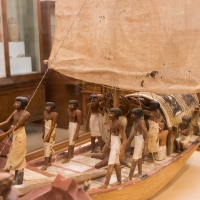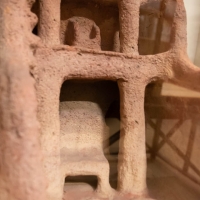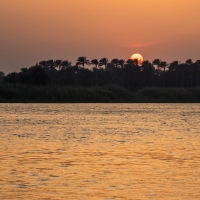Giza and Cairo – Day 2
Six o’clock alarm, up and breakfast. Headed up the (very) grand staircase for breakfast. The ship’s maitre d’ squirts your hand with disinfectant, a plague of diarrhoea or norovirus would be disastrous amongst the clientele, and advises you on your choice. Breakfast consisted of sticky pastries, cereals (alas no Jordans, which is now sold in French supermarkets), yogurts, fresh fruits, cheeses, breads, boiled eggs, crepes, omelettes. I got stuck behind one client who was trying to explain to the chef what an easy-over egg is.
Soon we were herded onto our buses, clutching our Whispers (radio sound systems) and bottles of water for the trip to Giza and the pyramids. The road there took us past many rather derelict looking blocks of flats. The Egyptians seem to build reinforced concrete skeleton structures up to around 10 storeys high, using wooden scaffolding. The walls are then filled in with bricks. Many of the apartments are so close
The pyramids appeared busy to us, but apparently, this was not so. First stop was at a high point to take pictures of the three main pyramids. Then back to the pyramids to see the Solar Boat in its humidity controlled museum. It is a vessel reconstructed from remains found in one of the boat pits sunk around Cheop’s (aka Khufu) pyramid. (We soon discovered everyone in Egyptology has multiple names, some Greek ones, & guises. Sigh. A soon as you thought you’d cracked it and knew who was who, it changed.) The barge was to transport the dead Pharaoh Khufu across the heavens, with the sun god Ra, to his afterlife. The barge, made entirely of Lebanese cedar wood, is over 141 feet long and took 14 years to reassemble. There is evidence of Nile water in the timbers, so perhaps it once floated. We spent some amount of time looking at the old original preserved
We were offered an optional visit into the heart of
All the sites were heaving with vendors trying to entice you on to their camels or sell you items. We were told it was best to avoid any eye contact or show any sign of interest when passing through such areas. The sales pitches are: one dollar items, which are not the items you will get, but something else, free gifts where they relentlessly chase you down and claim money from you, and cheap camel rides, where
Back to the boat accompanies by our police escort. R had not realised there was a police escort, but she had wondered why the vehicle behind us was using its siren and never overtaking. We also had a well-dressed police major on board the coach complete with bulging pocket from his automatic pistol. He had accompanied us around the pyramids earlier. Back on board to disinfectant spray on arrival, hot flannels to mop the brow, and a hot drink to revive oneself. The Egyptians believe a cold drink after being out in the sun is bad for you, you must let the body adjust with a hot drink first. Lunchtime back at the boat was a huge buffet, which could be eaten in several courses. Normally there is a soup course, then a starter of hummus, other dips, breads, salads, cheeses, cold meats, shellfish. Then the main course, which had potatoes, rice, fish, meat, pasta. Dessert was fruits, cheeses, sticky sweets. I can see I will be putting on serious weight as the days pass. Rosemary v puzzled as to what was the point of going back for lunch and hence “wasting time”. But the rest of the clientele appeared to think it normal & good.
An hour after our return we were back on the coach to the Cairo Museum, where we had a guided tour of the lower section, taking us through the three ages of the Pharaohs. Then to the breathtaking gold Treasures of Tutankhamun. Free time allowed us to look at more casks and tomb goods such as model figures crafted 4000 years ago. Elsewhere, near Giza I think, there is a new Egyptian museum under construction. When this is complete, all of the Treasures of Tutankhamun will be collated to be under one roof.
I had to buy a photography permit to take photos in the museum, but could not take photos in the Treasures section. Photo permits were to become normal and more expensive than today’s 50 EGP. Thereafter it was usually 350 EGP, about £15 GBP. Some couples with a camera each and different ideas of what needed to be photographed and how, were rather aggrieved.
Back to the coach (hand wash) and police escort, then the boat, (hand wash, hot flannels and hot drink), in time for afternoon tea, complete with sweet, not savoury, nibbles.
The idea was that after afternoon tea, we could wash and rest before the ship’s welcome cocktail hour. (R muttered that we were not here to rest, but to do things.) (All afternoon teas and evening drinks sessions were accompanied by a pianist in the salon, playing on a grand piano.) Our cabin faced out onto the Nile, so we could sit on our balcony looking over the river and watch the sun set, while listening to the call to prayer. Magical.
The welcome cocktail before supper was in the lounge, complete with a tower of drinks. Back down to the Marasem Restaurant (immediate hand wash) for a waiter-served meal. I don’t have a record of what it was. We sat at tables of six – seven people, a few more settings were laid than required, so you had some choice if you were the last person into the restaurant. Most meals on board were self-serve buffet, with soup, entrée, main course (I did once go up for two mains, fish and then meat), (very) sweet desserts and cheese & breads. The wine and beers served was limited to a couple of glasses, this was never an issue as there were many non-drinkers and your glass was topped up regularly. The wine choice was Red, White or Rose and they were all an Egyptian make called Obelisk.
After dessert, there was a loud racket of banging drums as the cooks came out with a birthday cake for
After dinner, we were entertained by a couple of male musicians who played traditional instruments. The Oud a short-necked, pear-shaped instrument like a Lute, and a Qanun. Arabic Qanuns are usually constructed with five skin insets that support a single long bridge resting on five arching pillars, whereas the somewhat smaller Turkish Qanuns are based on just four. This allows Arabic variants of the instrument to have more room for the installation of extreme bass and treble strings. Qanuns manufactured in Turkey generally feature 26 courses of strings, with three strings per course in the case of all regional variants. Contemporary Levantine designs use Nylon or PVC strings that are stretched over the bridge poised on fish-skins as described on one end and attached to wooden tuning pegs at the other end. (And yes, quite right, I didn’t write that bit.)
And so to bed in our twin berthed cabin.
